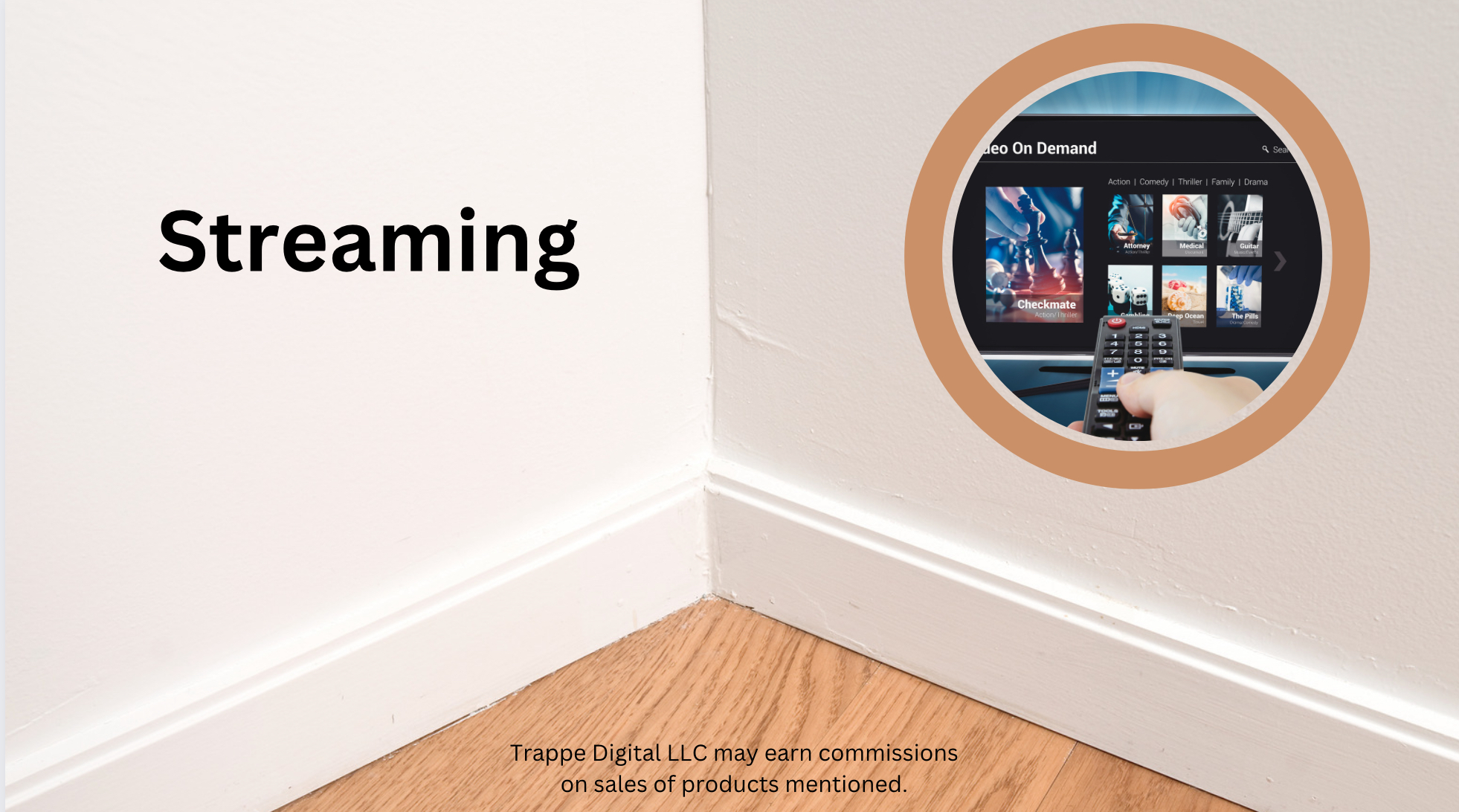Trappe Digital LLC may earn commission from product clicks and purchases. Rest assured, opinions are mine or of the article’s author.
How many streaming services are there? Some of the mainstream ones are YouTube TV, Netflix, Amazon Prime, Disney +, Paramount, Hulu are some of the big players. Even satellite provider DirecTV now has a streaming service.
Let’s discuss the topic in a bit more detail:
- what are streaming services?
- how expensive are these services?
- pros of streaming services
- cons of streaming services
- which services should I get?
- how many streaming services do I need?
What are streaming services?
These services started as web-based ways to watch content. Think YouTube TV, Netflix, Amazon Prime, and Hulu. But now, there are also versions from traditional content producers like Disney+, tech companies like Apple TV, and sports networks like ESPN+. In addition, television networks have also launched their own services – like NBC’s Peacock.
In short, streaming services allow viewers to watch content on-demand by paying a monthly fee. They can watch shows on their tablets like iPads, smartphones like iPhones, or smart TVs.
How expensive are streaming services?
It depends on what plan you sign up for. Apple TV, for example, is currently $4.99 per month, while my monthly Netflix bill is around $21. YouTube TV, which easily replaces traditional TV, starts at $73/month.
Amazon Prime Video is included in a prime membership and now also shows ads. For an additional $2.99 per month it’s ad free.
A 2023 report shows that households are paying less for streaming services now in total.
Pros of streaming services
There certainly are several advantages, and I subscribe to several services myself, including:
- Hulu, where I mostly watch Bundesliga soccer games through the ESPN+ integration
- Netflix, usually for shows and movies
- YouTube TV, for regular TV and NFL Sunday Ticket
- Amazon Prime, which is included in my Amazon Prime Membership, but now shows some ads. For an $2.99 a month there’s no ad.
- Disney+ is mainly for the kids to watch Disney shows.
- Fubo at times for sporting events
- FreeCast offers hundreds of free live channels and over 500k free on-demand shows and movies.
In theory, the most significant advantage might be that you don’t need a full-fledged channel lineup, which was the case when TV was the only option. Instead, you can subscribe to what you want to watch.
If I only binge-watch stuff on Netflix, that could, in theory, be my go-to and only service I need. However, for sports fans, ESPN+ might be the only network required if all you want to watch is Bundesliga soccer. fuboTV is another option.
It’s also great that these services allow me to watch shows anywhere. So, for example, I could be riding a bike at the gym and watching a Netflix show on my iPad with AirPods in. Sitting at a softball tournament, I can easily watch a show between games.
Streaming services also have eliminated the war over the TV remote – at least in my house. If one person watches something on the TV already, others can use their tablets or phones to watch shows elsewhere. Everyone can even sit near each other while wearing headphones.
If you only subscribe to one or two services, the cost could be cheaper than what we used to pay for a more traditional TV provider.
Though Netflix also added ad-based plans, many streaming services are also ad-free. Watching shows without ads is undoubtedly a great user experience that I appreciate.
One of the biggest advantages might be personalization. Everybody in the household has their own login and sees what’s relevant to them and not what’s relevant to everyone.
Cons of streaming services
A con is that the landscape of video content of this quality is splintering. So, it might not be that realistic to think that consumers only subscribe to one service but need multiple, and maybe most of them, because several services now host the different shows they watch.
That cost certainly can add up.
Watching a service on my tablet is one thing, and works well. But switching between services on my smart TV is a bit of a pain. You have to exit one, the other loads, and then you can start looking for your show. So it’s not as seamless as changing channels on a TV.
Read next: How many drafts are needed to drive content performance?
Which streaming services should I get?
That all depends on what you want to watch and your priorities. Amazon Prime is included in your Prime Membership, so that might be an easy choice. Also, some Verizon plans include bundles of Hulu and Disney+, so you might consider getting those two that way.
More and more sports are streamed, which could affect your decision. For example, DirecTV has had NFL Sunday Ticket for decades but that has now moved to YouTube TV.
For example, I currently watch NFL games on DirecTV, but depending on where they end up in future seasons, I might add a service based on my interest in watching those games that are not locally available to me.
How many streaming services do I need?
Well, it’s possible to survive without having any – just like it’s possible to live without watching TV. But, we might want to watch certain shows or sporting events. And, after all, it’s cheaper to get a package with the sports we want to watch than to attend a sporting event in person.
So consider what content you want to consume and your budget, and decide based on those factors.

